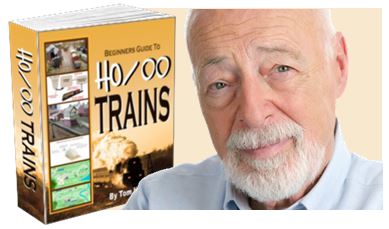|
The Importance of Research in Model Train Scenery
|
When you are
beginning to build your layout you need to remember the importance of
research in model train scenery.
You will want
to have the most authenticity in the buildings and structures that you add to
your layout and you can’t do that without doing your homework. This homework
means research and this research is centered on the type of structures and
buildings that were present in the era and timeframe your track layout is
placed in, as well as the setting.
|

Click Here for
HO SCALE TRAINS
Info
|
No matter what the scale of
your train layout is there will be no shortage of buildings, structures, water features,
stations, depots, connects and houses available for purchase. Of course many model
railroaders choose to make their own scenery and structures. Regardless of which choice is
made, it is still vital to research the correct items for your time frame and setting. By
setting we mean the landscape – is it a city, a small town, countryside with fields of grain,
or mountainside with coal mines and shacks.
Because realism is the most
significant factor in the building of your layout, research for that realism and authenticity
is critical. It will certainly detract from the impressiveness of your layout if you feature
mostly a 1950's small town but add in a movie theater from 1980. If you are doing an old west
scene you certainly do not want to inadvertently place a car from the 1920’s into your scene.
These are extreme examples but they do show why research into your chosen era in time is so
critical.
Not only do you want to
research what the buildings and structures of the particular era you are featuring are
architecturally, you will also want to know what color the buildings were painted in that
era. Then you will need to know the best way to weatherize your scenery as well. It is the
attention to the littlest details that will make your scenes the most authentic. If you are
doing a rural scene or a small Appalachian town in the 1940’s and 50’s things like pumps at
outdoor wells for drinking water and outhouses are critical because of the lack of indoor
plumbing.
There are many ways to do your
research. The history of model railroading is rich and colorful. Many people will start
immediately to look for history and pictures on the internet. There is nothing wrong with
this as the internet is a source of immense information. There will be plenty of images and
pictures of the buildings and structures of the selected timeframe online. Perhaps the best
way to do this online research is to choose your location and time period and then ‘Google’
it. When the search results come up just select ‘images’ at the top of the page and you will
see a wealth of pictures from that time and place.
A more exciting manner of
research is to research how others have actually depicted model train scenery throughout the
past sixty years or so. This is not as inexpensive as looking up the time and place online.
If you have the means to travel, you can indulge in your hobby by taking in the many historic
train and scenery layouts around the country in galleries, museums and public places. The
model train scenery you will be able to take in range from a New England town in winter in
the 1930’s, or a California gold mine excavation in the 1940’s and 50’s. You will see
mountains with coal mine settings, farm towns from the 1930’s with grain elevators and
surrounding fields of gold.
Hard as it will be not to get
totally caught up in the fun and excitement of these trips and seeing these train setups,
remember you are there for the purpose of research. Get as much information as you can about
the scene and its select time frame and location. Ask the builder of the layout if you can
learn what they did in respect to research before they built this setup.
One additional way of doing
your research would be to focus in right away on a specific town and location. For instance
you know you want to portray Marietta Ohio in 1954. Look up that specifically or look for
county and city records. There are many ways to research and assure the authenticity of your
layout.
HO Scale Buildings
|